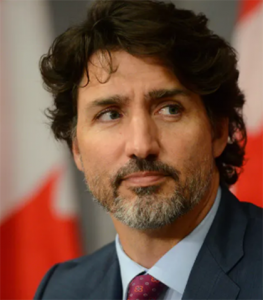US, Canada increase Afghan refugee intake
The US and Canada have announced significant increases in their refugee intakes this year following the Taliban taking control of Afghanistan and a looming humanitarian crisis.
The moves will put pressure on other western nations, including Australia, to follow suit.
 The Biden administration in the US plans to set the refugee admissions cap for the US fiscal year that begins October 1 at 125,000.
The Biden administration in the US plans to set the refugee admissions cap for the US fiscal year that begins October 1 at 125,000.
This meets a target that President Biden set during the 2020 campaign and after a backlash from refugee advocates who claimed he wasn’t accepting enough refugees from around the world.
In April, President Biden had announced that he would keep refugee admission levels for the year at just 15,000 — a record-low level set by his predecessor, Donald Trump.
Under the revamped admissions levels, the United States next year will accept up to 40,000 refugees from Africa, 15,000 from East Asia, 10,000 from Europe and Central Asia, 15,000 from Latin America and the Caribbean and 35,000 from near East and South Asia. Another 10,000 refugees can be accepted from any region.
The US orchestrated an airlift by western military forces of nearly 125,000 people out of Kabul in the final weeks of August.
Canada has doubled its planned intake of Afghan refugees fleeing the Taliban to 40,000 in line with an election pledge by Prime Minister Justin Trudeau.
The move, a week after Trudeau’s Liberal Party won the general election, was welcomed by humanitarian groups in Canada.
Refugee activists had been pressing the government to do significantly more when it initially committed last month to take in 20,000 refugees after the Taliban swept into power
With the Taliban’s harsh interpretation of Islamic law and their repression of women, many Afghans have been hoping to leave the country, and members of Mr Trudeau’s cabinet had hinted that they would raise the numbers accepted.
The doubling will put the Afghan effort on the same level as the Syrian resettlement program during Mr Trudeau’s first year in office which saw 39,636 refugees arrive between from November 2015 and the end of 2016.
Canada’s Minister of Foreign Affairs Marc Garneau announced the increase on the podium of the UN General Assembly in New York.
“Now, faced with a heart-wrenching situation in Afghanistan, Canadians have once again shown their openness to those who do not wish to live under Taliban rule but prefer to stand up for democracy, human rights and gender equality,” he said.
“In fact, Canadians overwhelmingly called on us to do more,” he said. “And in response to their generosity and welcoming spirit, we have now committed to welcoming 40,000 Afghan refugees to Canada — so that they too can contribute to our success, while we continue to support their efforts for a more peaceful, tolerant world,” Mr Garneau said.
In line with Canada’s existing proposal scheme, groups of individual Canadians will be able to privately sponsor Afghans looking to come to the country and be responsible for their resettlement.
Canada’s Immigration Minister Marco Mendicino said that Canada had established overland routes to evacuate Afghans to neighbouring countries.
“It is essential that we continue to ensure that the Taliban respect the right of safe passage so that as many Afghans who wish to leave are able to do so,” Mr Mendicino said.
He said the expanded resettlement effort will focus on women, girls, LGBTIQ Afghans, and people belonging to ethnic and religious minorities, which have been targeted by the Taliban in the past.












